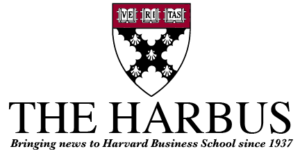The title of this article may be very pretentious. However, what is implied by the title is a matter of taste, obviously, my taste. Building a classical music library requires raising the issue of greatness as a matter of budget constrains and at some stage, even space constrains. In my next article, I’d suggest my choice of the works and performances that no musical library can live without.
But for now, I’ll return to the issue that I raised at the start, the greatest music of all time. There are so many pieces of music written in the last 650 years, but in my opinion there is one that rises above all others in western music – Johann Sebastian Bach’s Mass in B minor BWV 232 (“Bach Werke Verzeichnis” – Bach’s work list isn’t a chronological list).
Why is the Mass the most beautiful music of all times? Well, if you don’t know this music, and even if you do but are a skeptic, sampling two parts of the Mass, the delightful and stirring “Cum Sancto Spiritu” and the “Agnus Dei”, will give you a pretty good idea why I consider it the greatest music of all time. The “Agnus Dei” is especially moving, I believe this is the ultimate lament music, pure sorrow.
Bach’s composition of the Mass uses almost all the musical richness existing in Bach’s time – a large orchestra with choir and four soloists. But it’s the quality, and not just the musical quantity, that makes this piece so wonderful – this is the one piece of music that comprises all of the human emotions in musical language – a work of passion and compassion, of crystal clear beauty.
The story behind the composition of the Mass is quite interesting. Bach was a very religious Protestant and a large part of his compositions were written to religious texts (most important among them were the two great passions written to the text of St. Matthew and St. John). Bach and other German musicians were influenced by the departure from the Roman Catholic belief system during the 18th century. This religious movement influenced Protestant musicians to not compose music to the full text of the Latin Catholic Mass. While Bach was a very religious man, his composition of the Mass wasn’t for God worship per say, but rather to convince Friedrich August II, Elector of Saxony to commission work from Bach. The initial composition that Bach submitted to Friedrich included only a few parts of the Mass (Kyrie and Crucifixus) and did not make any impression on Friedrich. The interesting point is that along the years, Bach continued to add other compositions to the Mass and it wasn’t until a few weeks before his death that he actually completed it. In my view, he did this knowing that his completed Mass would never become truly public during his lifetime in Protestant Germany. I, for one, tend to see this story has an indicator that Bach saw the Mass as his lasting musical and religious legacy.
Hopefully, by now, I’ve increased your interest in purchasing the Mass. If you do decide to buy the Mass, you may face the difficult dilemma of having to chose from the 60 existing performances on the market.
Before I state my own favorite performance, I’ll explain why so many variations are currently available. The different variations stem from a revolution that happened to the way the Mass and the rest of Bach’s vocal music are performed. This revolution began in America 20 years ago, when a young conductor and musicologist named Joshua Rifkin wrote an article that said that Bach never used real choir for performances of his vocal music in his lifetime. Instead, Rifkin explained, Bach used four soloists and from time-to-time another four soloists to perform the part of the choir (each soloist sings the part of the specific choir – the soprano sings the soprano part of the choir, and so on). Rifkin came to this conclusion after reading what people, who saw Bach perform, had written about Bach performances. I would argue, however, that Rifkin’s article should be viewed with a critical eye from two reasons:
1. It’s known that Bach had a rough time with the boys choir he used for the performance of his works. There are many letters from Bach to the principal of the school where he complains that the children tend to be sick and skip rehearsals. When you read some of the evidence Rifkin based his article on, you can understand that Bach used soloists out of day-to-day constrains more than anything else.
2. Who cares? Are all the historical performance facts from Bach’s time necessary to produce authentic modern day performances? Using Rifkin’s logic it would be necessary to castrate young boys in order to reflect the same methods common in Bach’s days.
For me, the important thing is how we react to the performance. In my personal case, I love the single-voice-choir performances. I would argue that Bach’s music is so clear and beautiful that performing it with a large choir just distorts the musical clarity. Performed with good soloists reveal the small details that make Bach’s works so rich and great.
My all time favorite performance is the second ever single voices performance after Rifkin’s, the 1984 recording of conductor Andrew Parrott with a group of soloists with exceptionally beautiful voices, most prominent among them is the Soprano Emma Kirkby. This performance was recorded in 1984 and could be found in a 2-CD set of Virgin Classics at a bargain price (catalog #561998).
If you do prefer the choir performance, you can’t go wrong with John Eliot Gardiner’s 1990 recording of the Mass (Deutsche Grammophon #415514).

